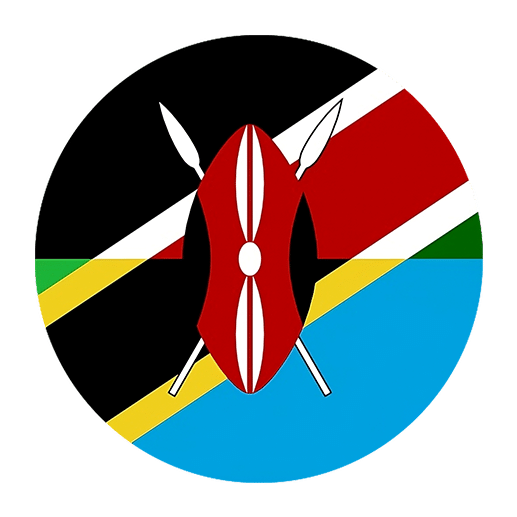Language is a living entity, constantly evolving and reshaping itself. Among the fascinating aspects of this evolution is the way languages influence each other, often due to historical, cultural, and commercial interactions. One such compelling case is the influence of Arabic on the Swahili language. Swahili, spoken by millions in East Africa, has been significantly shaped by Arabic over centuries. This article delves into how Arabic has influenced Swahili, examining historical contexts, linguistic impacts, and the cultural implications of this interconnection.
Historical Context
The relationship between Arabic and Swahili dates back to the early centuries of the Common Era, around the 7th and 8th centuries, when Arab traders began establishing trade routes along the East African coast. These traders from the Arabian Peninsula were primarily interested in gold, ivory, and slaves. As they settled in coastal regions, they brought their language, culture, and religion with them, creating a melting pot of linguistic and cultural exchange.
The Swahili coast, stretching from modern-day Somalia to Mozambique, became a hub of trade and interaction. This coastal region witnessed the rise of city-states like Kilwa, Mombasa, and Zanzibar, which thrived as centers of commerce, attracting traders from various parts of the world, including Persia, India, and the Arab world. The intermingling of these diverse cultures facilitated the incorporation of Arabic into the local Bantu languages, leading to the birth of what we now know as the Swahili language.
Linguistic Impact
The influence of Arabic on Swahili is evident at multiple levels, including vocabulary, grammar, phonetics, and script. Understanding these layers of influence requires a closer look at each aspect.
Vocabulary
One of the most noticeable influences of Arabic on Swahili is in its lexicon. A significant portion of Swahili vocabulary, especially words related to religion, trade, administration, and culture, is borrowed from Arabic. For instance:
– Religion: Words like “sala” (prayer), “kitabu” (book), and “msikiti” (mosque) have Arabic origins.
– Trade and Administration: Terms such as “safari” (journey), “rais” (president), and “diwani” (councilor) are derived from Arabic.
– Everyday Life: Common words like “sabuni” (soap), “meza” (table), and “shule” (school) also trace their roots to Arabic.
This extensive borrowing is not merely superficial; it indicates deep-rooted linguistic and cultural exchanges that have shaped the Swahili language over centuries.
Grammar
While Swahili retains its Bantu grammatical structure, Arabic has influenced certain aspects of its syntax and morphology. For example, Swahili has adopted some Arabic forms of pluralization. In Bantu languages, plurals are usually formed by changing prefixes, but in Swahili, some Arabic-derived words use Arabic pluralization patterns. For instance, the Swahili word “kiti” (chair) has the plural “viti,” following the Bantu pattern, but “kitabu” (book) from Arabic “kitab” has the plural “vitabu,” reflecting the Arabic influence.
Phonetics
The phonetic influence of Arabic on Swahili is subtle but noticeable. Arabic sounds such as /ħ/ (as in the Arabic word “حرف” – letter) and /ʕ/ (as in “عربي” – Arabic) have found their way into Swahili, though they are often approximated due to the phonetic inventory of Swahili. For example, the Arabic sound /ʕ/ is approximated in Swahili as a glottal stop or a voiced pharyngeal fricative.
Script
Before the advent of European colonization, Swahili was written in the Arabic script, known as Ajami script. This practice underscores the profound influence of Arabic on Swahili literacy and documentation. The use of Arabic script for writing Swahili was prevalent until the 19th century when colonial powers introduced the Latin alphabet. Nevertheless, the historical use of the Arabic script is a testament to the deep cultural and linguistic ties between the two languages.
Cultural Implications
The influence of Arabic on Swahili extends beyond the linguistic domain, permeating various cultural aspects of Swahili-speaking communities. This cultural intermingling is particularly evident in religion, literature, and social practices.
Religion
Islam, brought to East Africa by Arab traders, has played a crucial role in shaping Swahili culture. The majority of Swahili speakers are Muslims, and Islamic practices and traditions are deeply embedded in their daily lives. Arabic, being the liturgical language of Islam, has thus had a profound impact on Swahili religious practices and vocabulary. The Quranic teachings, Islamic jurisprudence, and religious ceremonies all utilize Arabic, further solidifying its influence on Swahili culture.
Literature
Swahili literature, both oral and written, bears significant Arabic influences. Traditional Swahili poetry, known as “Utenzi,” often employs Arabic meters and themes. Many classical Swahili texts, such as “Utendi wa Tambuka” (The Epic of Tambuka), are written in a style that reflects Arabic literary traditions. Moreover, the use of Arabic script in historical Swahili manuscripts highlights the literary and scholarly exchanges between Arab and Swahili cultures.
Social Practices
Various social practices and customs in Swahili-speaking communities exhibit Arabic influences. For instance, Swahili weddings often incorporate elements of Arab traditions, including the use of Arabic prayers and customs. The Swahili cuisine also reflects a blend of African and Arab culinary practices, with dishes like “pilau” (spiced rice) and “sambusa” (samosa) showcasing this fusion.
Modern-Day Implications
In contemporary times, the Arabic influence on Swahili continues to be significant, albeit in evolving forms. The spread of modern technology, media, and education has further facilitated the interaction between the two languages.
Education
In many Swahili-speaking regions, Arabic is taught as a second language, especially in religious schools known as “madrasas.” This formal education in Arabic ensures that new generations continue to be exposed to Arabic vocabulary and cultural practices, perpetuating the historical ties between the two languages.
Media and Communication
The rise of digital media and satellite television has also played a role in reinforcing Arabic influences on Swahili. Arabic news channels, religious programs, and cultural shows are accessible to Swahili-speaking audiences, promoting a continuous exchange of linguistic and cultural elements.
Globalization
Globalization has facilitated the movement of people, ideas, and languages across borders. The Swahili language, with its rich history of Arabic influence, stands as a testament to the enduring legacy of intercultural communication. In a globalized world, the interplay between Arabic and Swahili continues to evolve, reflecting the dynamic nature of language and culture.
Conclusion
The influence of Arabic on the Swahili language is a remarkable example of how languages evolve and shape each other through historical, cultural, and commercial interactions. From vocabulary and grammar to phonetics and script, Arabic has left an indelible mark on Swahili, enriching it in myriad ways. Beyond the linguistic realm, the cultural implications of this influence are profound, shaping religious practices, literature, and social customs in Swahili-speaking communities.
As we navigate an increasingly interconnected world, understanding the historical and cultural contexts of language interactions like that of Arabic and Swahili becomes ever more important. Such knowledge not only enriches our appreciation of linguistic diversity but also fosters a deeper understanding of the cultural tapestries that define our world.

